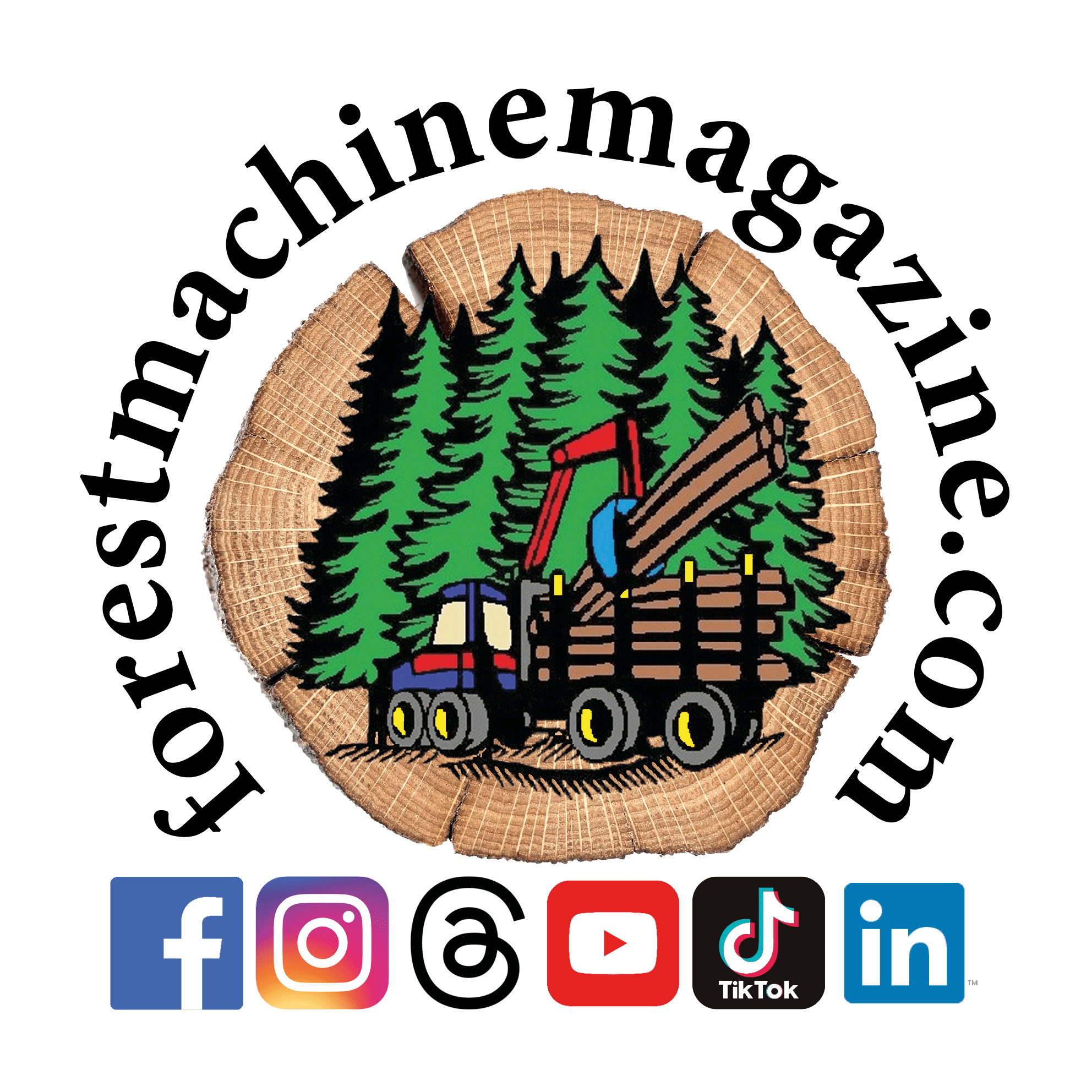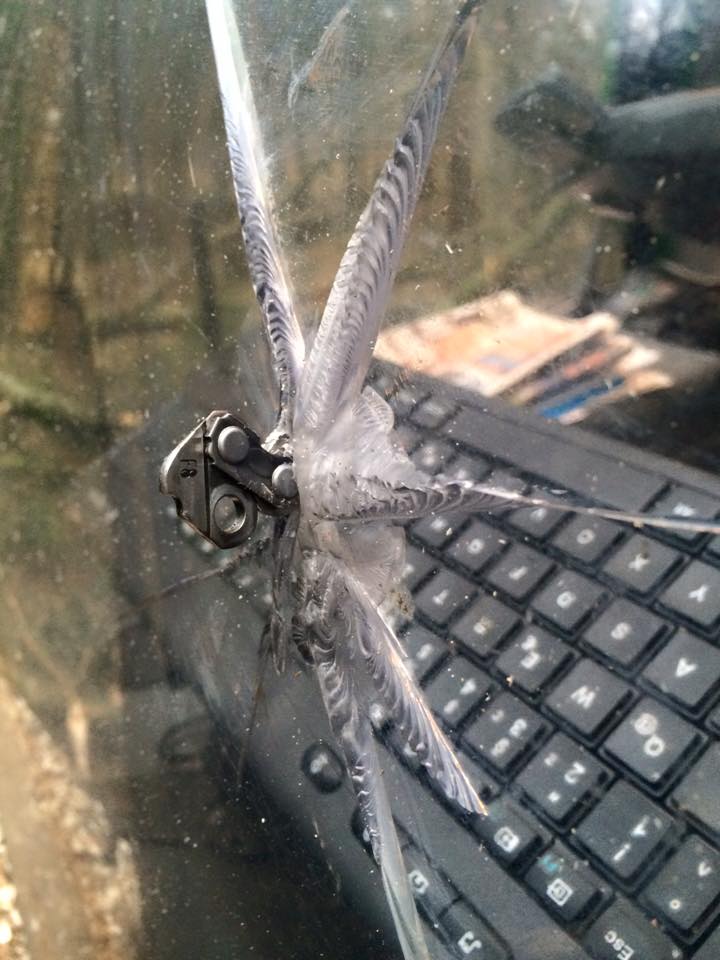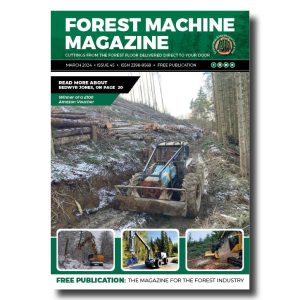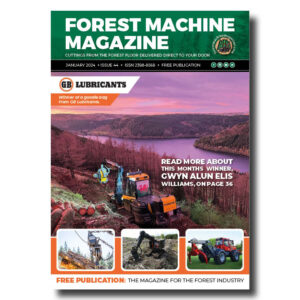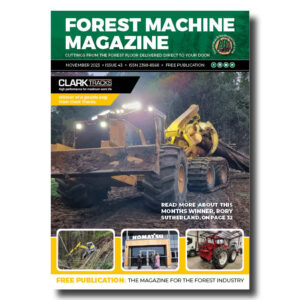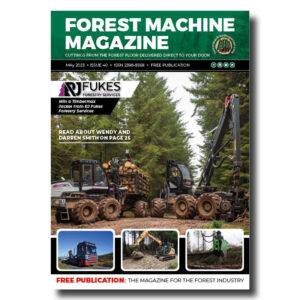Iggesund Forest is a leading manufacturer of harvester cutting equipment. Export Sales Manager Iain Lawrence shares his tips for reducing chain shot.
It is not feasible to completely eliminate the occurrence of chain shot; however, there are straightforward measures that can be implemented to mitigate the associated risks. Chain shot refers to the high-velocity separation and ejection of one or more segments of a cutting chain from the end of a fractured chain. When a saw chain breaks, it has the potential to launch linkages into the surrounding environment at significant speeds. Typically, the chain shot travels along the plane of the saw, posing a hazard to individuals in proximity.
Chain shot whistling through the air has as much kinetic energy as a bullet fired from a rifle! You should stay at least 70m away from a working harvester and only approach it once it has stopped working and the harvester operator has signalled you to approach.

-
That’s a remarkable amount of work hours for a single machine, the Norcar 600 owned by Erkki Rinne is taken well care of, it even has the original Diesel engine.
-
Kieran Anders is a forestry contractor working in the lake district. His work involves hand cutting and extracting timber using a skidder and tractor-trailer forwarder.
-
It is not possible to eliminate chain shot, but there are simple steps that can be taken to reduce the risk.
-
Arwel takes great pride in the fact that the mill has no waste whatsoever, “the peelings are used for children’s playgrounds, gardens and for farm animals in barns in the winter and the sawdust has multiple uses in gardens and farms as well.
-
Timber hauliers need to encourage young blood in, and also look after the hauliers we have, we need make the sector a safe and positive place to work.
FIND US ON
Chain shot can happen on processing equipment or a manual saw. A chain breaks for a number of reasons including:
- Improper tension – chain too loose
- Improper chain maintenance or repair
(hammered rivets) - Damaged sprocket, bar and/or chain
- Improper bar and chain lubrication
- Defective chain
- Excessive chain speed – new chainsaws can drive chains faster than their design and harvesters can be adjusted to push chain to excessive limits.
Keep in mind that many chains fail at the instant they are damaged so chain shot cannot be totally avoided.
How chain shot happens
A chains cutting speed is normally 40m/sec, but on breaking can accelerate up to 309m/sec (1,112km/hr) almost the speed of sound. Higher chain speeds with attendant power input generally equates to faster cutting speeds but faster cutting speeds mean increased wear, shorter service life and increased chance of chain breakage and injury. Researchers estimate that a chain shot might occur in 1 in every 50 chain breaks.
Responsible chain, guide bar and sprocket manufacturers are taking the risk of chain shot very seriously and are doing their utmost to make sure that they are supplying products that are engineered to the highest standards while using the best materials that are available.
Forest machine manufacturers are looking at ways to reduce the risk of chain shot to operators by improving the strength of safety glass and
polycarbonate windows. Chainsaw clothing manufacturers are developing lighter and safer clothing with better protection.
Iain Lawrence, from Iggesund Forest, specialises in this field. FMM has worked with Iain on numerous occasions’ trialling the quality and performance of cutting products and looking at ways to improve
safety.
“I started out with Sandvik Windsor in 1992 until 2001 where I was employed as the UK Sales and Marketing manager. Training and development of the harvester sector was the prime objective of my role.”
“I joined Blount (Oregon) in 2001 and acted as European sales manager for the Windsor brand until 2006. This role involved incorporating the Sales and development of new
business in Europe for the Windsor brand. As well as identifying new distribution and opportunities to develop the brand within Europe.”
“I continued with Blount (Oregon) in the sales and development of the Oregon Harvester range in Europe and South Africa until 2017. The most important part of my role at Oregon was the training of OEM’s, distributors, dealers and operators on how to maintain the cutting system. I encouraged safe working practice and regular maintenance to improve safety in the work place and improve fuel economy – one of the largest costs to operators.”
“From 2017 I have been with Iggesund Forest as their Export Sales manager: Continuing my training role and developing a training package for Iggesund Forest, again to promote safety in the workplace.”
Iain emphasizes the significant importance of conducting regular inspections and maintenance of cutting equipment. He offers several recommendations aimed at minimizing the risks associated with chain shot incidents.
General Maintenance
- Ensure correct chain tension at all times, clean behind and around saw chain tensioning unit to maintain correct function.
- Use good quality chain oil
- Check chain speed regularly, should be 40 m/s
The implementation of the aforementioned best practices is instrumental in decreasing the occurrence of chain shot incidents. Chain shot poses significant risks to safety and should not be underestimated. Furthermore, it has the potential to result in substantial repair costs for the machinery involved.
The rule of thumb for replacing is 1-2-10; one guide bar to two sprockets to ten chains.
Other recommendations to increase operator’s safety:
- Always follow the manufacturer’s recommendations for maintenance.
- Never use a dull or blunt chain, replace it or sharpen it immediately as this greatly increases wear on the cutting equipment.
- Maintain the manufacturer’s recommended depth of the rakers throughout the life of the chain.
- In cold and freezing conditions use lighter chain oil if possible as this will increase the flow rate and operate the saw periodically without cutting (air cuts) as this will increase the amount of lubrication supplied to the cutting system.
- Do not operate a harvester with chain shot eliminator missing.
Utilising a severely worn chain on a new sprocket or a deteriorated guide bar in conjunction with a new chain can significantly reduce the operational lifespan of these components. Implementing basic and regular maintenance practices will optimize the longevity of the cutting system, enhance safety, and improve the equipment’s fuel efficiency by as much as 10%, which can result in considerable cost savings.
It is ultimately the responsibility of the operator to conduct regular inspections and adhere to the manufacturer’s guidelines for the maintenance and repair of equipment. Compliance with these recommendations is essential, as it may contribute to the prevention of accidents and could potentially save lives, including one’s own.
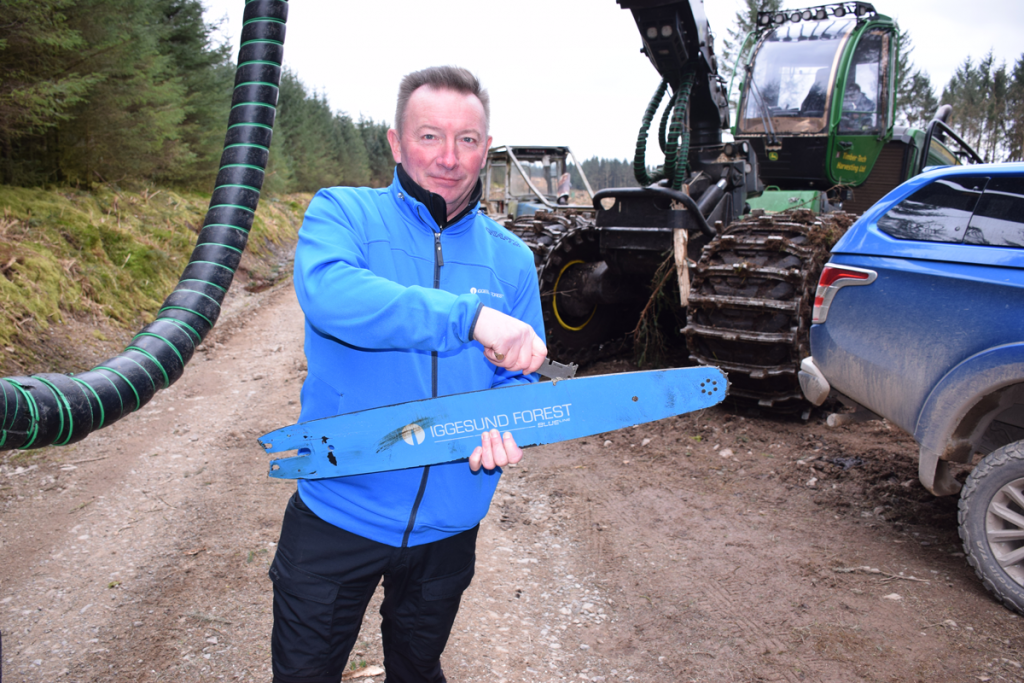
Turn and clean bar every four hours. Clean guide bar rails and check for damage, wear and correct depth. If worn or below minimum level, replace with new saw bar.
On a weekly basis grind saw bar rail level to remove sharp and knife edges. The rails should be parallel with the side of the saw bar.
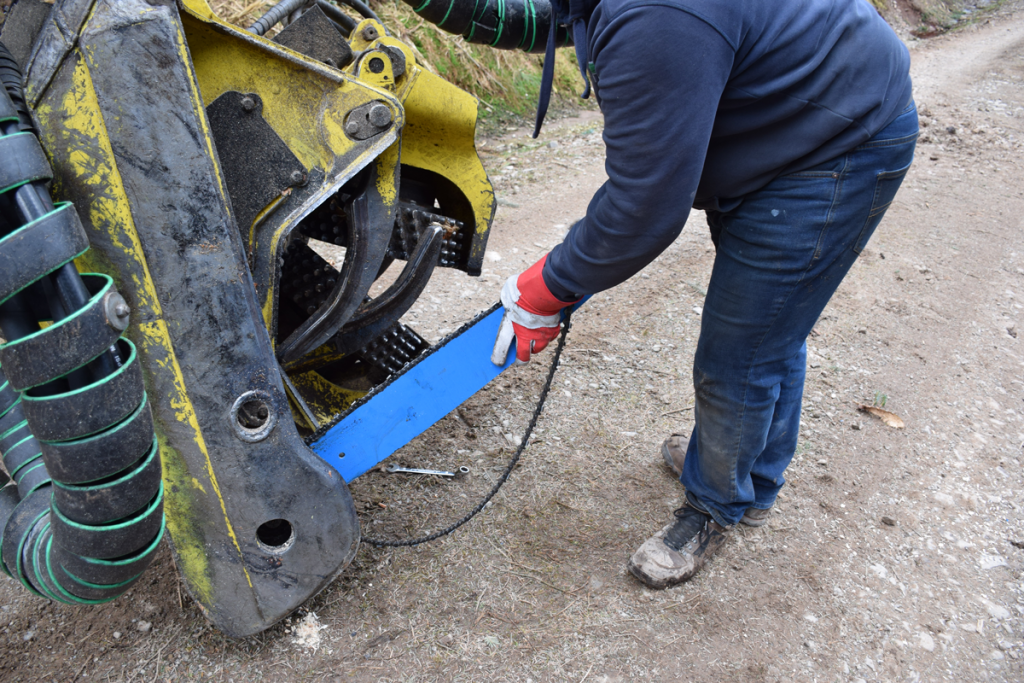
When sharpening chains, ensure there are no broken, damaged or loose parts. If these are found, replace the saw chain.
Check chain for any damage/wear before fitting.


Sign up for our free monthly newsletter here
Contact forestmachinemagazine@mail.com to get your products and services seen on the world’s largest professional forestry online news network.
#homeoflogging #writtenbyloggersforloggers #loggingallovertheworld
Written by loggers for loggers and dedicated solely to the equipment used in forestry operations.
